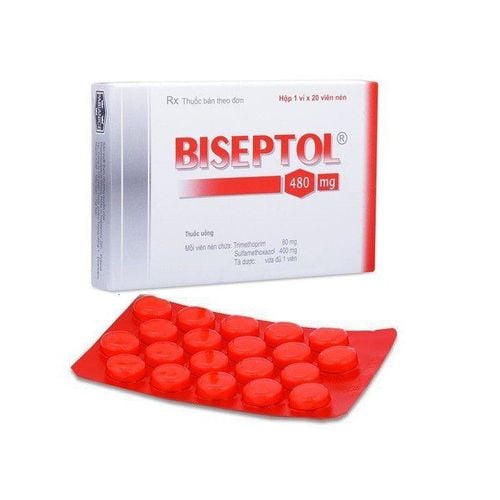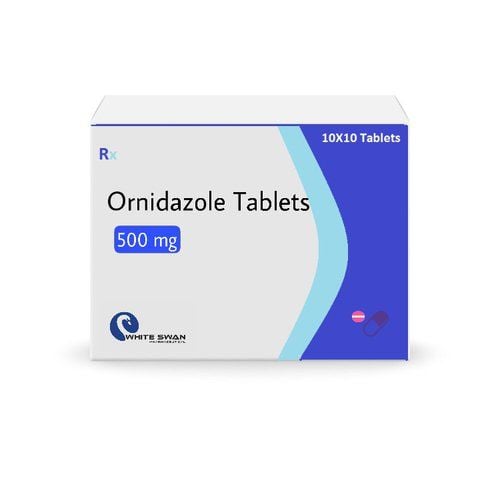This is an automatically translated article.
Acute diarrhea or intestinal amoebic dysentery are very common diseases. To treat these conditions, patients can use the drug Kasiod with the ingredient Diiodohydroxyquinoline. So what is Kasiod and how is it used?
1. What is Kasiod?
Kasiod drug is a product of Khanh Hoa Pharmaceutical Joint Stock Company, used in the treatment of acute diarrhea or intestinal amoebic dysentery. The main active ingredient in the drug Kasiod Diiodohydroxyquinoline content 210mg. In addition, in each Kasiod tablet, there are other excipients just enough, including Croscarmellose, Microcrystalline cellulose, Povidone, Magnesium stearate, Aerosil...
2. Indications and contraindications of the drug Kasiod
Kasiod is indicated in the treatment of:
Intestinal amoebic dysentery; Diarrhea is caused by an acute infection and is not disseminated. Kasiod drugs are not used in the following cases (Contraindications):
People with a history of allergies or hypersensitivity to the active ingredient Diiodohydroxyquinoline or other excipients contained in the drug; The patient was identified with hyperthyroidism; Dermatitis of the extremities due to enteropathy (also known as atopic dermatitis due to zinc malabsorption); Pregnant; Children under 30 months old.
3. Instructions for using Kasiod
3.1. How to use Kasiod drug produced and prepared in the form of tablets for oral use. This product should be taken after meals. When taking Kasiod, the patient needs to swallow the tablet whole with enough boiled water to cool it, absolutely do not chew or crush it.
3.2. Dosage The specific dosage of Kasiod drug is as follows:
Dosage for acute diarrhea: Adults take 2-3 tablets of Kasiod each time, 2-3 times per day. Children over 30 months old use Kasiod at a dose of 5-10mg/kg body weight in 24 hours, divided equally into 3-4 oral doses. The treatment of acute diarrhea with Kasiod drug lasts up to 7 days; Dosage of Kasiod to treat intestinal amoebic dysentery: Adults use 2-3 tablets of Kasiod each time, 2-3 times a day. Children over 30 months use dose 5-10mg/kg body weight in 24 hours, divided equally into 3-4 oral doses. A course of amoebic dysentery with Kasiod lasts up to 20 days. 3.3. Overdosage of Kasiod and its management The symptoms of Kasiod overdose are quite similar to the manifestations of side effects. More seriously, some patients may have liver and kidney toxicity; Therefore, patients with an overdose of Kasiod should be closely monitored for skin, facial, blood pressure symptoms and should be cautious because dangerous conditions can develop very quickly; Patients who overdose on Kasiod need to quickly notify the doctor or go directly to the hospital for monitoring and timely treatment. It is best for patients to avoid missing doses of this product. If a dose is missed, the patient should skip the missed dose of Kasiod, do not take it when it is almost time for the next dose and at the same time should not skip more than 2 doses in a row.
4. Precautions when using Kasiod
During the use of Kasiod, the patient should be closely monitored, and must have a plan to rehydrate water and electrolytes when necessary; Patients who are being treated with Kasiod drug should inform their doctor when performing thyroid function tests because the drug contains iodine, so the results may change; Cases of infectious diarrhea and widespread manifestations need to combine Kasiod with antibiotics with good diffusibility; The duration of treatment with the drug Kasiod should not exceed 28 days; Patients should be cautious about taking Kasiod while driving or operating complex machinery because of the risk of blurred vision or visual disturbances; During treatment with Kasiod, patients should absolutely follow the doctor's instructions, do not increase or decrease the dose without consent. At the same time, patients need to consult their treating doctor before deciding to stop using Kasiod drug; Pregnant patients are contraindicated to use Kasiod drug; Patients in breast-feeding should be cautious when taking Kasiod because the amount of drug that passes into breast milk has not been determined. To ensure the best safety, this object should not use the drug Kasiod. Some other notes of the drug Kasiod:
Patients absolutely do not use expired Kasiod products or appear strange symptoms such as mold, discoloration or watery; Store Kasiod medicine to avoid places with direct sunlight or high humidity; Do not leave Kasiod near the place where children play to avoid children playing and accidentally drinking.
5. Side effects of Kasiod
The process of using the drug Kasiod may occur some side effects as follows:
Digestive disorders: Hangover, nausea, vomiting or stomach pain; Thyroid dysfunction, goiter or hyperthyroidism due to increased iodine levels; Acne-like skin rash. In case of experiencing unusual symptoms such as an itchy rash, a rash or any other suspected symptoms related to Kasiod, you should consult your doctor or pharmacist for advice.
6. Kasiod Drug Interactions
Do not combine Kasiod with other products containing hydroxyquinoline.
Please dial HOTLINE for more information or register for an appointment HERE. Download MyVinmec app to make appointments faster and to manage your bookings easily.













